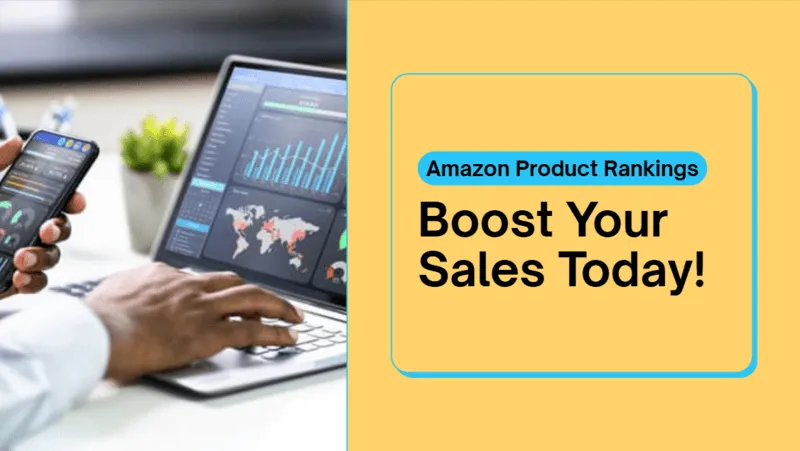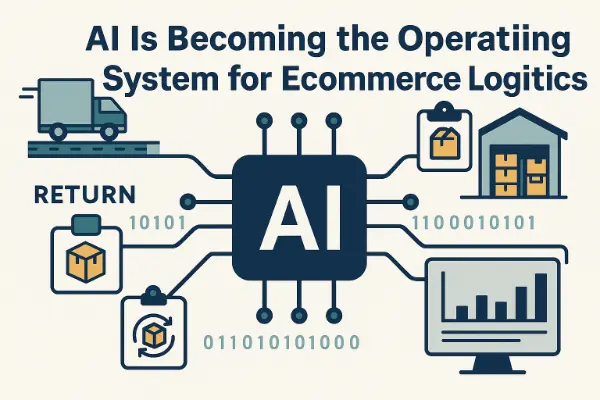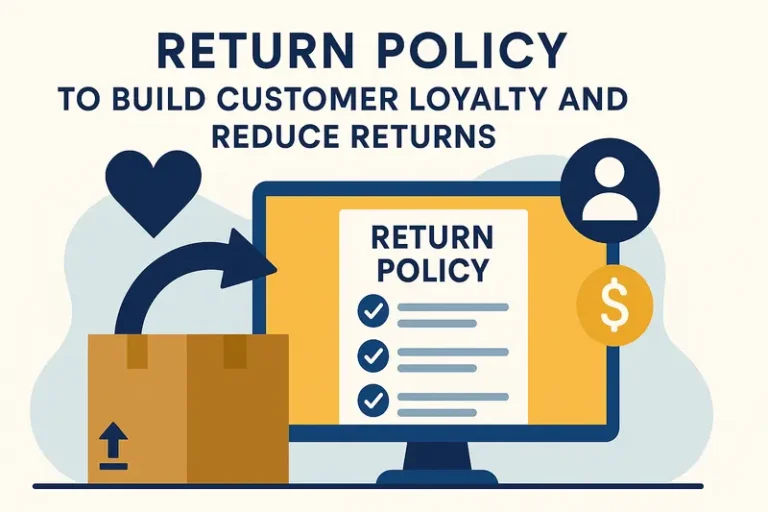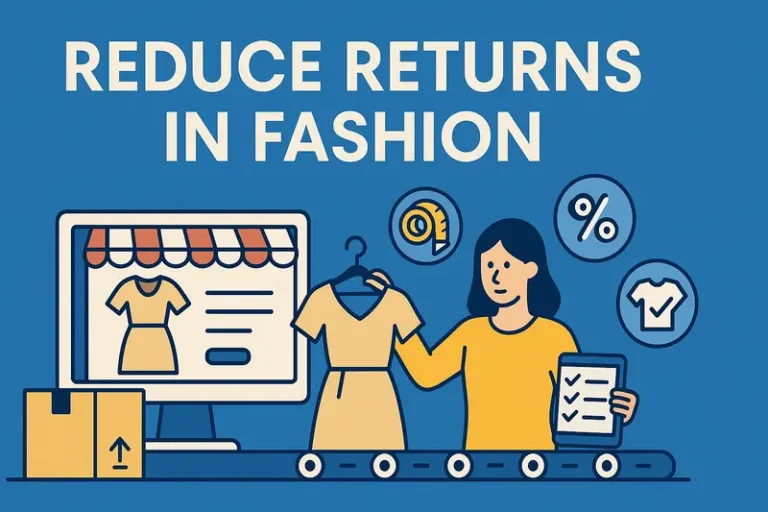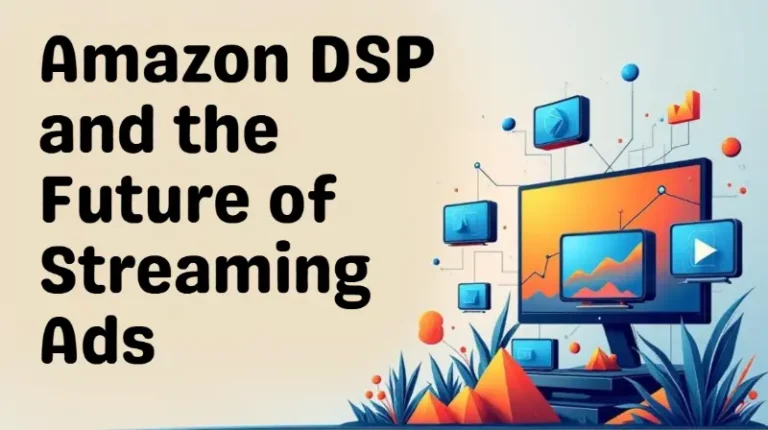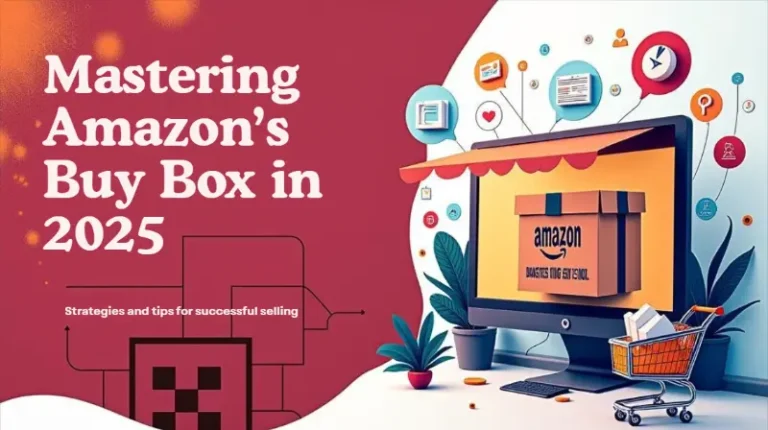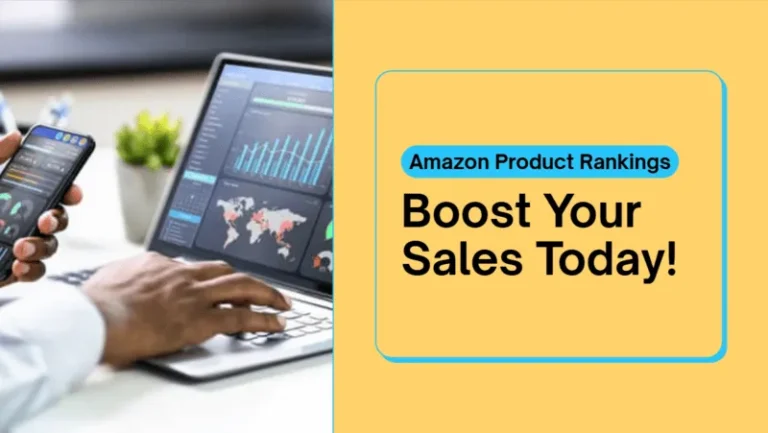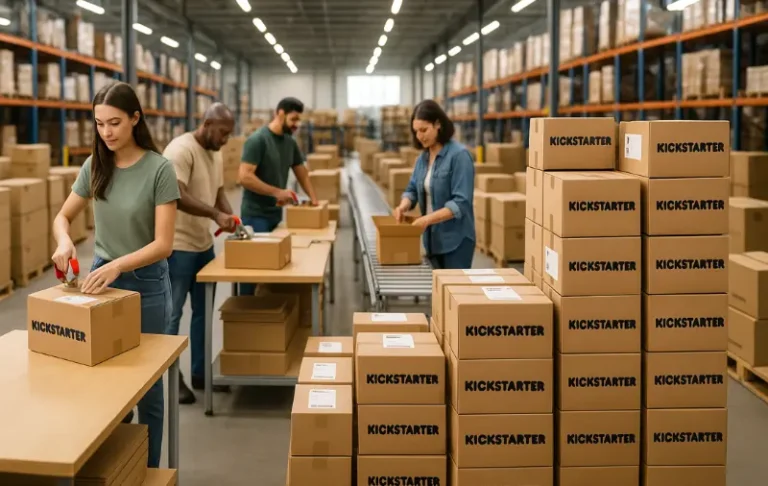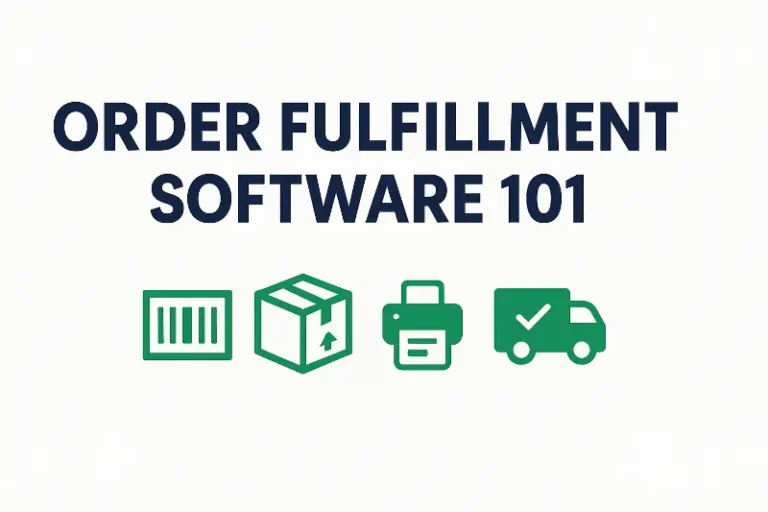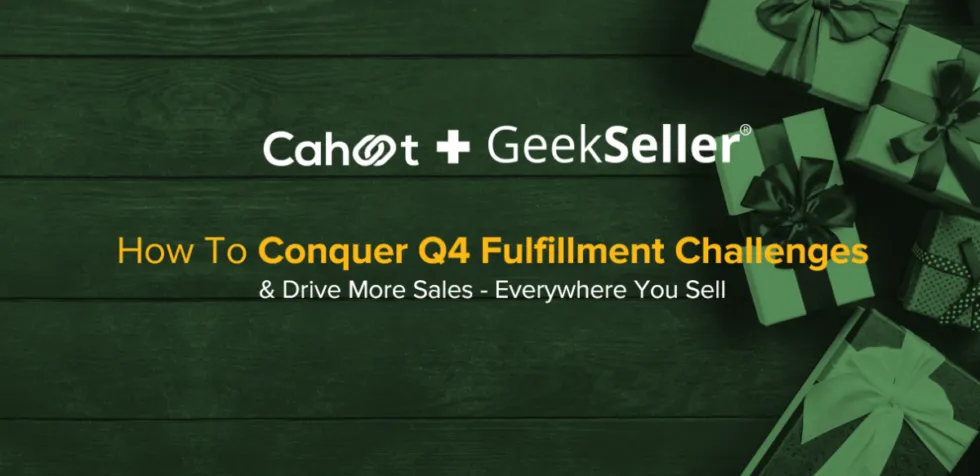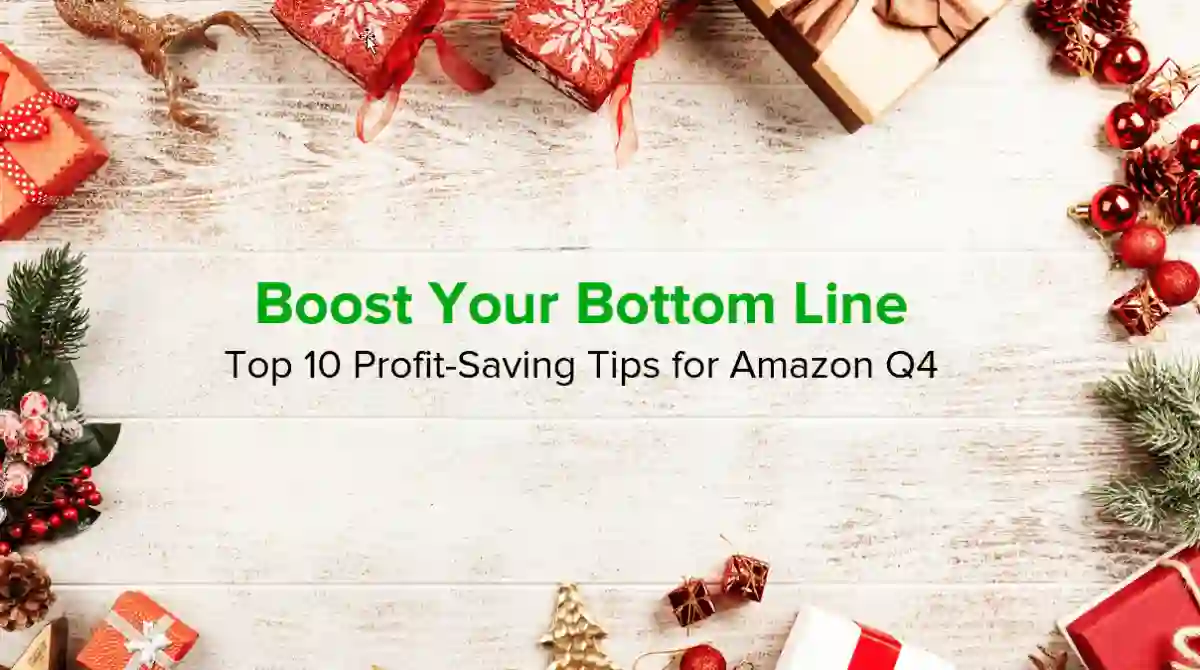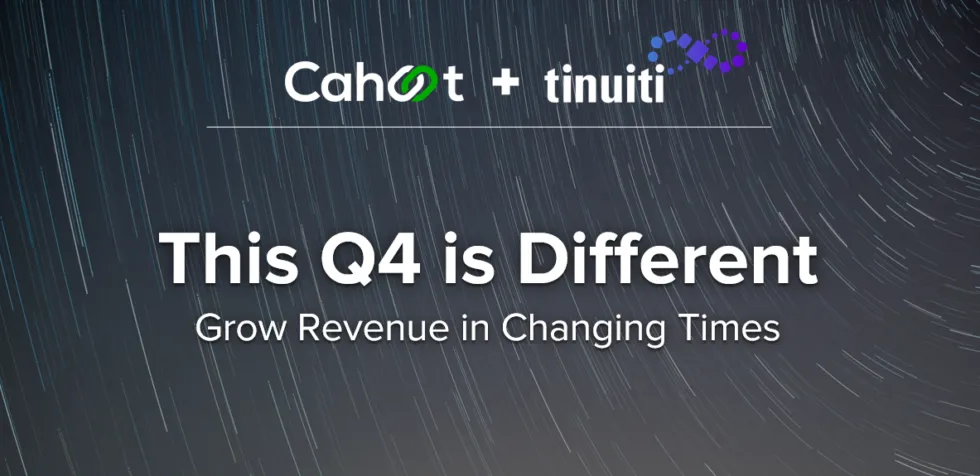How to Increase Amazon Product Rankings Before Peak Season 2025
Peak season 2025 is looming, and boosting your Amazon product rankings should be at the top of your agenda. In the ultra-competitive Amazon marketplace, a higher Amazon sales rank can make all the difference between a blockbuster Q4 and being buried on page 5 of the search results. I’m not talking about shallow tricks or quick hacks, but sustainable, semantic-rich ranking gains that stick. Over the years, we’ve all watched Amazon’s search algorithm evolve (hello A9, A10, and now an AI-powered engine nicknamed COSMO in 2025). What worked a couple of years ago, like simple keyword stuffing, just doesn’t cut it anymore. Now it’s about genuinely optimizing for the customer’s search intent and customer satisfaction, while still checking the technical SEO boxes. Here, I’ll break down our recommended strategy for increasing Amazon product rankings ahead of the holiday rush, blending proven best practices with some fresh 2025 perspectives.
Slash Your Fulfillment Costs by Up to 30%
Cut shipping expenses by 30% and boost profit with Cahoot's AI-optimized fulfillment services and modern tech —no overheads and no humans required!
I'm Interested in Saving Time and MoneyOptimize Your Listing Keywords and Content
First things first: keyword research. To rank well, your product has to earn relevance for the right search terms. That means doing the homework on relevant keywords, both the obvious high-volume ones and the long-tail keywords that specific customers use. Dive into Amazon’s own data (the Search Query Performance dashboard in Brand Analytics) to see which search terms are driving impressions and conversions for your products. Those are gold. Sprinkle these valuable keywords strategically in your product title, bullet points, description, and backend keywords (hidden search terms). The key is balance; include important specific keywords, but don’t go overboard and trigger keyword stuffing penalties. As one Amazon expert puts it, Amazon matches your listing to searches by assessing the keywords in titles, bullet points, descriptions, and backend search terms. So, ensuring keyword relevance across these elements is critical for visibility.
Beyond keywords, make your product detail page as compelling as possible. Amazon’s algorithm increasingly uses natural language processing (the new COSMO AI) to assess content quality and search intent alignment. So write for humans first. Use bullet points that highlight key features and benefits, not just specs. Try to answer common customer questions right in the description. If someone is searching “durable kids water bottle BPA free,” your listing better say “BPA-free” and speak to durability in a conversational tone. This not only improves Amazon SEO but also conversion. And conversion (how many shoppers click buy after seeing your page) is a key factor for ranking. Amazon’s older A9 algorithm rewarded relevant keywords, but the newer A10 and COSMO reward behavioral signals, meaning if customers click your listing and actually buy (i.e., a high conversion rate), Amazon takes that as a sign your product was a great match and will rank it higher. So, optimizing the listing isn’t just about appeasing the algorithm; it’s about convincing customers you have what they need.
Don’t forget high-quality images and other media. Ensure your images are high-resolution, zoomable, and show the product from all angles (and in use-case scenarios). Images don’t directly contain keywords (aside from the alt text you can input), but they do impact sales. A set of crisp, informative images and even a video can increase conversion rates, and as mentioned, conversion feeds ranking. I focus on creating visuals that not only look good but also educate the customer (like infographics pointing out key features). The bottom line: optimize product listings with both the search algorithm and the customer in mind. Use keyword optimization to get them in the door, and quality content to keep them there.
Drive Sales Velocity with Pricing and Promotions
Sales drive rank, and rank drives sales; it’s a flywheel. One reliable way to boost your Amazon sales rank is to crank up your sales volume. Sounds obvious, but how to do it? Two words: price and promo. Take a hard look at your pricing strategy ahead of peak season. Is your price competitive for the category? If not, I might consider a strategic price drop or a coupon during the early phase of the holiday season to stimulate more sales. Amazon’s algorithm monitors sales performance and rewards products that show strong sales velocity and momentum. A product that suddenly starts selling faster than its peers can climb in rankings quickly (and conversely, running out of stock or slowing down can tank your rank). So I may suggest sacrificing a bit of margin short-term by setting competitive prices (or offering a lightning deal) to drive volume and increase sales, knowing it can pay off in organic visibility.
Looking for a New 3PL? Start with this Free RFP Template
Cut weeks off your selection process. Avoid pitfalls. Get the only 3PL RFP checklist built for ecommerce brands, absolutely free.
Get My Free 3PL RFPPromotions and Advertising are the other levers. Plan to unleash some Amazon PPC ads (Pay-Per-Click campaigns) to boost visibility for important keywords. Sponsored Products ads can put you on page 1 even before your organic rank is there, and those ad-driven sales indirectly boost your organic rank over time. Use keyword-targeted campaigns for your main keywords to get incremental sales. But do this carefully, focusing on relevant terms so you don’t blow money on clicks that don’t convert. The goal is to improve organic standing, not just pay for sales. Also, leverage deals or Amazon coupons to entice shoppers; those little green badges can improve click-through rate. A higher click-through and conversion rate from such promos signals to Amazon that shoppers are interested. It’s worth noting, Amazon’s A10 algorithm (and presumably COSMO) gives weight to external traffic and overall performance, not just pure PPC. Some of my clients run targeted Google Ads or social media campaigns pointing to their Amazon listings. This can drive a burst of external traffic that, if converting, might give a rank bump (Amazon loves when you bring in new shoppers from outside).
Crucially, avoid any black-hat tricks that could get you penalized. Instead, focus on real customer engagement: maybe an email to your past customers saying “Check out our holiday sale on Amazon” to drive legitimate traffic. By combining smart pricing, promotions, and advertising, you should generate a steady surge in sales. Industry experts note that products with a strong sales history and high conversion rates tend to rank higher, so that’s exactly what you’re trying to cultivate going into peak season.
Prioritize Reviews and Customer Satisfaction
No surprise here: positive reviews play a huge role in Amazon rankings. They are both a direct factor (Amazon knows that products with higher ratings and more reviews tend to convert better) and an indirect one (they improve conversion, which improves rank). Make it a priority to keep the customers searching for your products satisfied at every step, so that you naturally accumulate more positive reviews. How? Start with product quality; nothing kills your rank faster than a swath of bad reviews due to a flimsy product. Perform quality checks like crazy and set realistic expectations in the listing to avoid negative feedback. During peak season, ensure your customer service is on point: fast responses to questions, helpful communication, and if there’s an issue, making it right. Happy customers = happy customers who might leave a good review and are less likely to return the product.
Amazon has cracked down on review shenanigans, so only use legit methods to get reviews. For instance, use Amazon’s “Request a Review” button (or an automated tool to trigger it) for each order, which sends an official email to buyers politely asking for a review. Even a modest 1–2% of buyers leaving reviews is great when volume spikes. More reviews (and recent ones) not only improve rank but also make Amazon shoppers more likely to purchase, feeding the cycle. Keep an eye on the customer reviews you’re getting, both star rating and content. The new Amazon algorithm (COSMO) even analyzes review content for sentiment and to see if the reviews match the product claims. This is next-level stuff: if your listing says “ultra quiet blender” and a bunch of reviews say “this blender is noisy,” I suspect Amazon will ding you in search for over-promising. So use that as feedback to improve the product or copy.
Importantly, customer experience after the sale matters too. Returns, order defects, and late shipments reflect dissatisfaction. Amazon’s algorithm might indirectly penalize listings with a high return rate or poor seller metrics (especially if you’re FBM or SFP). Aim for a smooth ride for customers from click to delivery. In fact, at Cahoot, we’ve seen that fast, reliable fulfillment leads to happier customers and better reviews. If you can offer Prime-like shipping speeds (whether via FBA or a Seller Fulfilled Prime model), customers are delighted, and you reduce negatives. Every bit of inventory management and fulfillment excellence feeds back into positive outcomes like good reviews and low returns.
Scale Faster with the World’s First Peer-to-Peer Fulfillment Network
Tap into a nationwide network of high-performance partner warehouses — expand capacity, cut shipping costs, and reach customers 1–2 days faster.
Explore Fulfillment NetworkManage Inventory and Fulfillment Meticulously
It would be a shame to do all this work to boost rank, only to go out of stock when demand hits. So inventory planning is absolutely part of ranking strategy. An OOS (out-of-stock) product loses its sales momentum and its ranking can plummet, and often takes time to recover even after restock. To avoid that, analyze last year’s sales and current trends to forecast how much stock you’ll need for the season (plus a safety buffer). Make sure to send inventory into FBA well in advance of the rush, so it’s checked in and ready to ship when orders pour in. If Amazon has restock limits for your SKUs, consider using a backup like a multi-channel fulfillment partner or 3PL to hold overflow inventory and drip-feed Amazon as needed, or even fulfill some FBM (Fulfilled by Merchant) orders if your FBA sells out. The key is never saying “Currently unavailable” during the peak! That’s a fast-track to losing the rank gains you fought so hard for.
Fulfillment speed and reliability also count toward customer happiness and indirectly affect ranking. If you fulfill via FBA, you’re generally good. Prime shipping gives you a conversion edge. If you’re doing FBM or Seller Fulfilled Prime, ensure you meet those shipment and delivery promises. Late deliveries can hurt seller metrics, and while Amazon’s search algorithm mostly focuses on product performance, extreme lateness or cancellations could impact your Buy Box and indirectly your visibility. Consider leaning on Cahoot’s network of warehouses to achieve 1–2 day delivery across the country for non-FBA orders, which helps you compete with FBA sellers in terms of shipping. It’s something many Amazon sellers overlook; fast shipping can improve customer satisfaction and thus your product’s success metrics, both FBA and non-FBA.
Another aspect of inventory management is staying on top of your catalog. If you have variations (sizes, colors), keep stock healthy on all the popular variants. Amazon can sometimes rotate the “main” child ASIN that shows up in search based on availability and sales. You don’t want your one variant that’s ranking well to go OOS and be replaced by a less attractive variant in search results. Also, consider whether you need to throttle ads if stock is running low; no point paying for rank only to run dry. In summary, a well-stocked, well-distributed inventory with robust fulfillment processes is the backbone of maintaining a good sales rank during peak season. Inventory is tied to sales performance: no inventory, no sales; and no sales, no rank. So treat inventory planning as part of your SEO work in a sense.
To me, the recipe is clear: optimize like a human (use good keywords and content), deliver great value (through price and service), keep customers happy, and the rankings will follow. It’s many moving parts, but when it all comes together, you set yourself up to dominate Amazon’s search results during the holiday frenzy.
Frequently Asked Questions
What factors most influence how to increase Amazon product rankings?
Keyword relevance, sales volume, sales velocity, conversion rates, customer satisfaction, and positive reviews all play key roles in improving Amazon’s sales rank and search results placement.
How can keyword research improve my Amazon sales rank?
Using keyword research tools to identify relevant keywords and long-tail keywords, then placing them in the product title, bullet points, backend keywords, and product detail page increases keyword relevance and visibility in Amazon’s search algorithm.
Do customer reviews affect Amazon search rankings?
Yes. Positive reviews play a major role in improving conversion rates and customer trust, which increases sales performance. More positive reviews signal to Amazon that your listing matches customer search intent, helping to rank on Amazon for targeted keywords.
What role does pricing play in Amazon SEO?
Competitive pricing helps drive more sales and sales velocity. Combined with keyword optimization, this can improve Amazon’s sales rank in the same category, especially during peak season when shoppers compare offers closely.
Why is inventory management important for improving Amazon rankings?
Consistent inventory management prevents stockouts, maintains strong sales history, and ensures customers see fast delivery options. This supports customer satisfaction and protects rankings in Amazon’s search results.
Turn Returns Into New Revenue
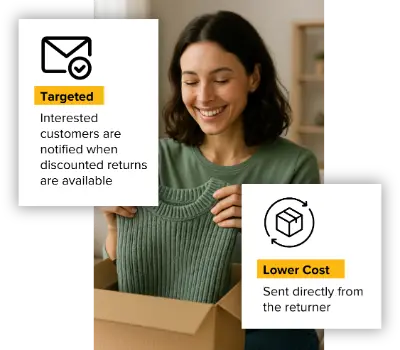
Amazon FBA Peak Season Fees: A Deep Dive
In this article
 3 minutes
3 minutes
Amazon’s FBA peak season fees have become a significant factor for sellers operating on the platform. With fulfillment fees increasing by 6% and storage fees nearly tripling during peak periods, it’s essential to understand the implications and explore alternative strategies.
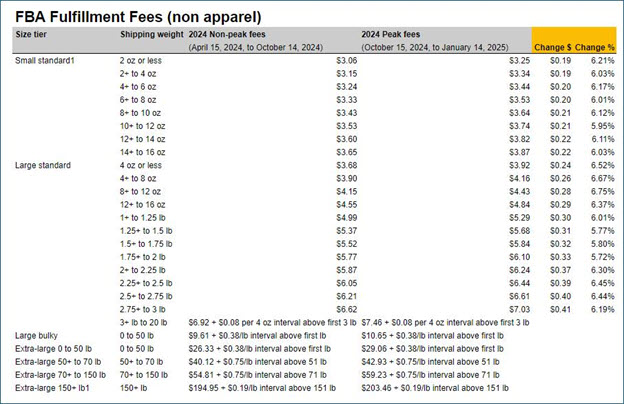
A Historical Perspective
Peak season fees on Amazon have been a recurring phenomenon for several years. As the platform’s popularity has grown, so has the demand for its fulfillment services. To accommodate the increased volume of orders, Amazon has implemented peak surcharges to offset the additional costs associated with hiring seasonal workers, expanding warehouse capacity, and optimizing logistics.
Comparing to Competitors
While Amazon’s peak season fees might seem steep, comparing them to other e-commerce marketplace platforms is worth it. Walmart Fulfillment Services, for instance, also increased its storage fees during peak periods but did not raise fulfillment fees. This suggests that Amazon is more aggressive in passing the costs to sellers.
Peak Season Surcharges
Given Amazon’s reliance on seasonal workers to handle the peak demand, peak season surcharges will likely continue for the foreseeable future. As long as the platform experiences significant growth during holiday periods, Amazon must ensure it can efficiently fulfill orders.
Slash Your Fulfillment Costs by Up to 30%
Cut shipping expenses by 30% and boost profit with Cahoot's AI-optimized fulfillment services and modern tech —no overheads and no humans required!
I'm Interested in Saving Time and MoneyStrategies for Managing Peak Season Fees
While peak season fees can be a challenge for sellers, there are several strategies to mitigate their impact:
- Optimize Inventory Levels: Carefully forecast demand and adjust inventory levels accordingly. Overstocking can lead to higher storage fees, while understocking may result in lost sales.
- Consider Alternative Fulfillment Options: Explore options like Seller Fulfilled Prime (SFP) or outsourcing to third-party logistics (3PL) providers. SFP allows you to fulfill orders yourself while offering Prime benefits to customers. 3PL providers can often offer competitive rates and flexible solutions, especially during peak seasons.
- Negotiate with Amazon: If you have a significant sales volume on Amazon (8 figures or more), consider negotiating with the platform to secure more favorable terms or discounts.
- Diversify Sales Channels: Reducing your reliance on Amazon can help mitigate the impact of its peak season fees. Explore other sales channels, such as your website or marketplaces like eBay.
- Offer Promotions and Discounts: Encourage early purchases by offering promotions or discounts during non-peak periods. This can help reduce the inventory you need to store during peak season.
The Role of 3PL Providers
Third-party logistics providers can be valuable for sellers looking to reduce peak season fees. By outsourcing fulfillment to SFP-ready 3PL providers like Cahoot, you can offer free, fast delivery of your products on Amazon and other channels while avoiding additional peak season surcharges. 3PL providers can also help with inventory management, order fulfillment, and returns processing.
Conclusion
Amazon’s peak season fees are a reality that sellers must navigate. By understanding the factors driving these fees and implementing effective strategies, you can minimize their impact on your business. Whether you choose to optimize your inventory, explore alternative fulfillment options, or negotiate with Amazon, it’s essential to proactively address these challenges and ensure your long-term success on the platform.

Turn Returns Into New Revenue

Avoiding Critical E-commerce Mistakes This Peak Holiday Season
The holiday shopping season accounts for approximately 30% of annual retail e-commerce revenue, which represents enormous potential. Success during this crucial period demands meticulous preparation and strategic execution across multiple operational areas. To capitalize fully, businesses must avoid critical e-commerce mistakes in website performance, marketing, inventory, fulfillment, and overall strategic planning.
Website Performance and User Experience
The backbone of holiday sales lies in seamless website functionality. Shoppers expect pages to load within milli-seconds, and delays can drive potential customers to competitors. To optimize performance, businesses must conduct thorough load testing to prepare for traffic surges, ensuring infrastructure stability. Streamlining the checkout process by simplifying forms, enabling guest checkouts, and optimizing mobile experiences is crucial. Enhancing trust by prominently displaying security badges and providing competitive shipping options, such as 2-day delivery, can reduce cart abandonment. All development updates should be concluded by early to mid-November to allow for stability testing, ensuring the site operates flawlessly as peak demand ramps up over the Black Friday/Cyber Monday weekend and through the end of the year.
Craft a Comprehensive Marketing Strategy
A successful holiday campaign starts long before the season peaks, not just during BF/CM. Effective marketing strategies should begin early, launching email campaigns months ahead to build anticipation and engage shoppers. Leveraging exclusive offers through pre-sale codes, early deal announcements, and limited-time discounts fosters loyalty. Expanding social media outreach with shareable promotions and influencer collaborations amplifies brand visibility organically. Overreliance on major shopping days like BF/CM can lead to unnecessary operational strain. Staggering promotions throughout the season, however, captures both early planners and last-minute buyers while spreading out the workload.
Slash Your Fulfillment Costs by Up to 30%
Cut shipping expenses by 30% and boost profit with Cahoot's AI-optimized fulfillment services and modern tech —no overheads and no humans required!
I'm Interested in Saving Time and MoneyAvoid Stockouts and Overstock
Inventory mismanagement is one of the most detrimental holiday mistakes. Both stockouts and excess inventory pose financial and reputational risks. Retailers should analyze historical data to forecast demand accurately and use real-time tracking systems to monitor stock levels across all sales channels. Early communication with suppliers ensures adequate inventory procurement and avoids last-minute (expensive) shortages.
Streamlining Fulfillment Processes
Fulfillment challenges often peak during the holiday season due to increased order volumes. Early preparation is essential to mitigating risks such as late shipping that leads to late deliveries and fulfillment defects. Establishing fulfillment partnerships and distributing inventory well before October ensures adequate capacity and rapid scalability. Multicarrier shipping solutions can optimize shipping costs and delivery timelines by comparing real-time rates across carriers and services.
Pricing and Product Presentation
Holiday shoppers demand clear, compelling product details and competitive pricing. Dynamic pricing tools allow businesses to adjust prices based on market trends and competitor activity while maintaining profit margins. Product listings must use high-quality images, multi-angle photography, and detailed descriptions that convey value and utility. Accuracy in these areas prevents abandoned carts and unnecessary returns.
Leveraging Technology for Operational Efficiency
The integration of advanced technologies transforms holiday operations enabling scalability and precision. Warehouse Management Systems streamline and optimize the movement of goods within a warehouse, ensuring efficient and cost-effective management of inventory by tracking its location, quantity, and movement throughout the receiving, storage, picking, packing, and shipping workflows, ultimately enabling overall warehouse productivity and fulfillment accuracy. Inventory and Order Management Systems are the central nervous system of your omnichannel retail operations, providing visibility and control of orders, inventory, customers, products, and more. Analytics platforms provide real-time insights into traffic, sales, and operational performance. Regular maintenance of automation systems and software minimizes downtime, ensuring uninterrupted operations.
Communication and Customer Support
Transparent communication builds trust any time of the year, but getting to trust quickly during the holiday rush increases the chances that customers buy from the well-prepared brands. Clearly displaying shipping cutoff dates and/or date-certain delivery dates, as well as making return policies easy to find and clear, using simple language, effectively manages customer expectations and increases conversion. Post-purchase, providing real-time updates about shipping delays, stock issues, or delivery changes reassures customers and demonstrates brand accountability and commitment to the customer relationship. Expanding support channels with chatbots, live agents, and comprehensive FAQs ensures customers have access to assistance when needed, and how they like to engage.
Looking for a New 3PL? Start with this Free RFP Template
Cut weeks off your selection process. Avoid pitfalls. Get the only 3PL RFP checklist built for ecommerce brands, absolutely free.
Get My Free 3PL RFPSummary
To thrive during the holiday season, retailers must adopt proactive measures. Monitoring competitor advertising, promotions, and pricing allows businesses to adapt dynamically. Ensuring seamless experiences across channels (webstores, marketplaces, apps), social media, and physical stores through omnichannel integration, including normalized product data using current high-resolution images and descriptions, encourages a delightful customer journey.
Time should be spent on building brand awareness and trust long before fourth quarter. Time should be spent analyzing data, procuring sufficient inventory, and finalizing marketing strategies. Software systems should be soak tested (especially if any parts of the tech stack are new) and fulfillment partner relationships established prior to the October start to the season. Seasonal staff need to be hired and trained to address the increased fulfillment and customer service demand.
The holiday season presents an exciting growth opportunity for ecommerce businesses. Not just a higher volume of one-time transactions, but the opportunity to create long-term relationships with loyal customers that may bear fruit for many years to come.

Turn Returns Into New Revenue

Preparing for Peak Holiday Season: A Guide for Sellers
In this article
 9 minutes
9 minutes
- Understanding Peak Season
- Important Holiday Dates for Peak Season
- Strategic Demand Analysis, Forecasting, and Marketing Execution
- Ecommerce Trends to Watch
- Optimizing Fulfillment, Logistics, and Inventory Management
- Fulfillment Services
- Leveraging Technology
- Elevating the Customer Experience
- Preparing Customer Support Teams
- Managing Returns Effectively
- Contingency Planning for Unforeseen Challenges
- Ensuring Scalability and Sustainability
- Converting Challenges into Strategic Wins
- Frequently Asked Questions
The peak holiday season is the most critical time of the year for ecommerce businesses, characterized by intense order volumes, high consumer expectations, and operational complexities. In particular, ecommerce sellers that fully outsource their fulfillment operations require different preparations that retailers and brands that own their fulfillment workflows don’t have to consider. A proactive approach focused on forecasting and planning for logistics needs, customer service demand, and supportive technologies is essential for navigating this high-stakes period effectively.
Understanding Peak Season
Peak season is a critical period for online retailers, typically occurring in the months leading up to and including the holiday season. During this time, ecommerce businesses experience significant shifts in sales and revenue, with certain periods, such as the holiday season, being pivotal for growth. Understanding peak season trends and statistics is crucial for ecommerce businesses to effectively prepare and meet customer demand. By analyzing past performance and anticipating future trends, online retailers can strategically plan their inventory, marketing, and customer service efforts to maximize their success during this high-stakes period.
Slash Your Fulfillment Costs by Up to 30%
Cut shipping expenses by 30% and boost profit with Cahoot's AI-optimized fulfillment services and modern tech —no overheads and no humans required!
I'm Interested in Saving Time and MoneyImportant Holiday Dates for Peak Season
The holiday peak season typically spans from October to December, encompassing key shopping events like Black Friday, Small Business Saturday, and Cyber Monday. There are about 30 days between Thanksgiving and Christmas, but the actual range is 27 to 33 days, so the holiday shopping season varies for shoppers who don’t start browsing or buying until Black Friday.
Daily shipment volumes can increase by 1,000% or more in ‘normal’ years, placing significant strain on fulfillment operations. However, some industries see even higher spikes in demand based on the holiday shopping season’s start after Thanksgiving Day. Ecommerce retailers will want to be more conservative with their delivery promises to customers needing to receive their orders before holiday events than normal.
Make sure to review each Carrier’s Published Shipping Deadlines to Ensure Delivery on or Before Christmas Eve:
Carrier / Service |
Contiguous U.S. (lower 48 states) |
Alaska, Hawaii, International, Military |
|---|---|---|
USPS Ground Advantage |
7 days before Christmas |
|
USPS Priority Mail |
6 days before Christmas |
|
USPS Priority Mail Express |
4 days before Christmas |
|
UPS 3 Day Select |
6 days before Christmas |
|
UPS 2nd Day Air |
5 days before Christmas |
|
UPS Next Day Air |
2 days before Christmas |
|
FedEx Ground Economy |
13 days before Christmas |
|
FedEx Express Saver |
6 days before Christmas |
|
FedEx 2Day & 2Day AM |
5 days before Christmas |
|
FedEx SameDay |
1 day before Christmas |
Strategic Demand Analysis, Forecasting, and Marketing Execution
Accurate forecasting is the foundation of successful holiday operations. Analyzing historical sales data to identify trends, understanding seasonal consumer behavior, and mapping inventory needs help prevent both stockouts and overstock situations. Collaborating with suppliers well in advance to secure production and delivery schedules is critical. Factoring in extended lead times for manufacturing and transportation ensures inventory is positioned where it is most needed.
Taking the time to carefully plan promotions, new listings for bundle and/or kit SKUs, multi-packs, etc. can all help online businesses increase revenue opportunities.
Looking for a New 3PL? Start with this Free RFP Template
Cut weeks off your selection process. Avoid pitfalls. Get the only 3PL RFP checklist built for ecommerce brands, absolutely free.
Get My Free 3PL RFPEcommerce Trends to Watch
Several ecommerce trends are expected to shape peak seasons. Online shoppers increasingly use their smartphones to make purchases, with mobile commerce sales projected to account for 78% of total ecommerce sales; over $490 billion. This shift underscores the importance of optimizing for mobile shopping experiences.
Social commerce continues to drive growth and influence purchase behavior, with social media platforms accounting for an estimated 18.5% of all online sales and this percentage is only expected to continue to grow.
Additionally, streamlining returns management can be a major differentiator for ecommerce businesses, with online order returns at 20 – 30% and costs exceeding $800 billion a year. Staying ahead of these trends can help ecommerce businesses enhance customer satisfaction and boost sales during the peak season.
Optimizing Fulfillment, Logistics, and Inventory Management
Meeting increased demand during the holiday season requires a well-structured fulfillment strategy. Distributing inventory across multiple warehouses using fully outsourced fulfillment partners such as Cahoot can significantly reduce shipping costs and transit times and increase on-time delivery performance. Fulfillment partners offer advanced tools and infrastructure to rapidly scale operations while delivering exceptional customer experiences for the brand.
Make sure to review third-party receiving deadlines and blackout dates and plan to have inventory inbounded and fulfillment-ready long before it needs to be. Communicate emergency contact info, volume forecasts (especially if any big spikes are expected from special promotions or sales from far-reaching sources such as Good Morning America Deals & Steals), and most importantly, make sure providers have enough stock on hand (including a buffer) to ship all orders on time, including any specialty items such as inserts or branded packaging materials.
Fulfillment Services
Fulfillment services play a critical role in ensuring a successful peak season for ecommerce businesses. A fulfillment partner can help businesses improve their logistics and supply chain management, reduce costs, and increase customer satisfaction. When choosing a fulfillment partner, ecommerce businesses should consider factors such as warehouse locations, types of products, order volume, SKU count, and inventory shrinkage allowance. By outsourcing fulfillment, ecommerce businesses can focus on other areas of their business, such as marketing and advertising, product development, and customer service. This strategic delegation allows businesses to scale efficiently and meet the heightened demands of the peak season.
Leveraging Technology
Make sure third-party fulfillment partners (3PL) can successfully deliver quick and efficient pick/pack operations with minimal fulfillment defects for your online store. Retailers need to make sure to manage inventory and listing visibility across channels and marketplaces, and communicate with customers in real-time about order status and tracking. Automated returns systems simplify post-purchase processes (which can also be outsourced), and enhance customer satisfaction and the likelihood of repeat purchases and increased lifetime customer value.
Elevating the Customer Experience
Providing an exceptional customer experience is a competitive differentiator for online stores during the holiday rush, especially post-holiday when customer-initiated return requests will peak. Transparent communication about shipping deadlines and potential delays fosters trust. Branded tracking pages that include upsell and cross-sell ideas, as well as other promotional and/or discount offerings can help encourage repeat purchases and increase customer lifetime value. Offering Delivery Date Promises using tools such as Fenix Commerce or ShipperHQ or Order Management systems like Pulse Commerce where the customer can place an order knowing the estimated delivery date helps increase conversion. Offering real-time order tracking and flexible shipping options reduces cart abandonment. Lastly, personalized packaging, branded unboxing experiences, and thoughtful details like gift notes or sample products can leave a lasting impression.
Scale Faster with the World’s First Peer-to-Peer Fulfillment Network
Tap into a nationwide network of high-performance partner warehouses — expand capacity, cut shipping costs, and reach customers 1–2 days faster.
Explore Fulfillment NetworkPreparing Customer Support Teams
The holiday season places heightened demands on customer service infrastructure. Expanding support teams and equipping them with training tailored to holiday-specific scenarios enables quicker, more accurate resolution of customer inquiries, and helps retain revenue when employees are trained to offer exchanges or gift cards rather than refunds for return requests. Comprehensive self-help FAQs and automated chat solutions provide additional support layers, ensuring seamless communication using the customer’s desired method of outreach.
Managing Returns Effectively
Returns are always a headache. But with returns rates during the holiday season approaching 30%, investing in an efficient returns process is a critical component of the overall peak season strategy. Clear, easily accessible return policies reduce customer frustration and cart abandonment. Advanced systems for processing returns and restocking inventory minimize revenue losses and improve operational efficiency.
Contingency Planning for Unforeseen Challenges
Even with thorough preparation, unexpected challenges such as extreme weather or carrier delays can arise. Working with fulfillment partners that offer distributed inventory options ensures continued operations during local disruptions. Active management of marketplace shipping templates associated with listings based on regional disruptions can prevent the over-promising of delivery commitments that customers rely on for a great experience.
Ensuring Scalability and Sustainability
Scalable solutions are essential to handle the dramatic increase in orders during peak seasons. Fulfillment partners that employ scan verification and next-generation shipping software minimize fulfillment defects leading to higher overall margins and happier customers. Sustainable practices, including eco-friendly packaging options and carbon-neutral shipping methods, appeal to environmentally conscious consumers while aligning with long-term business goals and increasing brand reputation.
Converting Challenges into Strategic Wins
Peak season preparation should begin months in advance. Early steps include finalizing demand forecasts, optimizing inventory positioning, and testing technical solutions for peak performance. Maintaining clear communication with all stakeholders and monitoring performance metrics ensures smooth operations.
The holiday season presents a unique opportunity to build customer trust that leads to lasting relationships. By focusing on strategic planning, leveraging technology, and prioritizing the customer experience, businesses can transform the challenges of peak season into a powerful growth opportunity. The most successful organizations approach this period with adaptability, innovation, and a commitment to delivering excellence.
Frequently Asked Questions
How can I prepare for the peak holiday season?
To prepare for the peak holiday season, focus on accurate demand forecasting, strategic inventory management, and optimizing your fulfillment processes. Collaborate with suppliers well in advance, plan promotions, and ensure your customer service team is ready to handle increased inquiries.
How can I optimize my fulfillment and logistics during the holiday season?
Optimize your fulfillment and logistics by distributing inventory across multiple warehouses, using fully outsourced fulfillment partners, and reviewing third-party receiving deadlines. Ensure you have enough stock on hand, including a buffer, to meet increased demand.
What role do fulfillment services play during the peak season?
Fulfillment services play a critical role in ensuring a successful peak season by improving logistics and supply chain management, reducing costs, and increasing customer satisfaction. Outsourcing fulfillment allows businesses to focus on marketing, product development, and customer service.
What are some effective strategies for managing returns during the holiday season?
Effective strategies for managing returns include having clear and easily accessible return policies, investing in advanced systems for processing returns and restocking inventory, and offering flexible return options to reduce customer frustration and cart abandonment.

Turn Returns Into New Revenue

Preparing for Peak Holiday Shipping Season [A Guide for Shippers]
In this article
 7 minutes
7 minutes
- 2024 Important Dates
- Strategic Demand Analysis, Forecasting, and Marketing Execution
- Optimizing Fulfillment and Logistics
- Leveraging Technology
- Elevating the Customer Experience
- Deliver Packages Safely the First Time
- Preparing Customer Support Teams
- Managing Customer Returns Effectively
- Contingency Planning for Unforeseen Challenges
- Ensuring Scalability and Sustainability
- Converting Challenges into Strategic Wins
- Frequently Asked Questions
The peak holiday season is the most critical time of the year for e‑commerce businesses, characterized by intense order volumes, high consumer expectations, and operational complexities. A proactive approach focused on forecasting and planning for logistics needs, customer service demand, and supportive technologies is essential for navigating this high‑stakes period effectively.
2024 Important Dates
The holiday peak season typically spans from October to December, encompassing key shopping events like Black Friday (November 29th), Small Business Saturday (November 30th), and Cyber Monday (December 2nd). With Thanksgiving falling on November 28th this year (which is the latest it can fall relative to Christmas), the 2024 holiday shopping season is the shortest that it can possibly be for shoppers who don’t start browsing or buying until November 29th.
In ‘normal’ years, daily shipment volumes can increase by up to 1,000% or more, placing significant strain on fulfillment operations. But some will see even higher spikes in demand this year due to the unusually late Thanksgiving Day. So the shipping deadlines below will feel tighter this year as carrier network capacity is constrained to fewer days, and thus, e‑commerce retailers will want to be more conservative with their delivery promises to customers needing to receive their orders before holiday events.
Carrier Published Shipping Deadlines to Ensure Delivery on or Before Christmas Eve
|
Carrier / Service
|
Contiguous U.S. (lower 48 states)
|
Alaska, Hawaii, International, Military
|
|---|---|---|
|
USPS Ground Advantage
|
December 18
|
|
|
USPS Priority Mail
|
December 19
|
|
|
USPS Priority Mail Express
|
December 21
|
|
|
UPS 3 Day Select
|
December 19
|
|
|
UPS 2nd Day Air
|
December 20
|
|
|
UPS Next Day Air
|
December 23
|
|
|
FedEx Ground Economy
|
December 13
|
|
|
FedEx Express Saver
|
December 19
|
|
|
FedEx 2Day & 2Day AM
|
December 20
|
|
|
FedEx SameDay
|
December 24
|
Strategic Demand Analysis, Forecasting, and Marketing Execution
Accurate forecasting is the foundation of successful holiday operations. Analyzing historical sales data to identify trends, understanding seasonal consumer behavior, and mapping inventory needs helps prevent both stockouts and overstock situations. Collaborating with suppliers well in advance to secure production and delivery schedules is critical. Factoring in extended lead times for manufacturing and transportation ensures inventory is positioned where it is most needed.
Taking the time to carefully plan promotions, new listings for bundle and/or kit SKUs, multi‑packs, etc., can all help to increase revenue opportunities.
Slash Your Fulfillment Costs by Up to 30%
Cut shipping expenses by 30% and boost profit with Cahoot's AI-optimized fulfillment services and modern tech —no overheads and no humans required!
I'm Interested in Saving Time and MoneyOptimizing Fulfillment and Logistics
Meeting increased demand during the holiday season requires a well‑structured fulfillment strategy. Distributing inventory across multiple warehouses using outsourced fulfillment partners such as Cahoot can augment existing operational capacity and reduce transit times, lower transportation costs, and increase delivery reliability. Third‑party partners offer advanced tools and infrastructure to rapidly increase scalability while simultaneously enabling the positioning of products closer to high‑demand areas, ensuring faster delivery and better customer experiences. Additionally, diversifying shipping carriers mitigates risks associated with carrier delays or capacity shortages.
Make sure to review third‑party receiving deadlines and blackout dates, and plan to have inventory inbounded and fulfillment ready long before it needs to be. Communicate emergency contact info, volume forecasts (especially if any big spikes are expected from special promotions or sales such as Good Morning America Deals & Steals), and most importantly, make sure providers have enough buffer stock on hand to ship all orders on time, including any specialty items such as inserts or branded packaging materials.
Leveraging Technology
Leveraging technology is key to maintaining efficiency during peak periods and earning customer trust that can lead to loyalty and future orders. Enterprise Order Management Systems like Shopify, Pulse Commerce, and BigCommerce enable quick and efficient pick/pack operations, practically eliminate fulfillment defects, manage inventory and listing visibility across channels and marketplaces, and communicate with customers in real time about order status and tracking. Automated returns systems simplify post‑purchase processes, enhancing customer satisfaction and operational efficiency.
Elevating the Customer Experience
Providing an exceptional customer experience is a competitive differentiator during the holiday rush, especially post‑holiday, when customer‑initiated return requests will peak. Transparent communication about shipping deadlines and potential delays fosters trust. Branded tracking pages that include upsell and cross‑sell ideas, as well as other promotional and/or discount offerings, can help encourage repeat purchases and increase customer lifetime value. Offering Delivery Date Promises using tools such as Fenix Commerce or ShipperHQ, or Order Management systems already mentioned, like Pulse Commerce, where the customer can place an order knowing the estimated delivery date, helps increase conversion. Plus, offering real‑time order tracking and flexible shipping options reduces cart abandonment. Lastly, personalized packaging, branded unboxing experiences, and thoughtful details like gift notes or sample products can leave a lasting impression.
Deliver Packages Safely the First Time
Win loyalty and increase the likelihood of future orders by taking the time to prepare for safe and accurate delivery the first time. A bad experience during a time‑sensitive situation can push the customer away. So, make sure to include enough dunnage (void fill) to prevent damage in transit. Ship with the proper hazmat designation so orders are not returned to sender (and this also ensures that carrier accounts are kept in good standing). Create international shipments for validated addresses using the correct HTS Code, goods description, and compliance according to each destination country’s regulatory requirements. Most importantly, get organized and make sure to hand over packages to the correct carriers. Margins go out the window if orders have to be double‑shipped to arrive on time, or customers return orders because they were delivered late, not to mention the reputation risk for the brand.
Looking for a New 3PL? Start with this Free RFP Template
Cut weeks off your selection process. Avoid pitfalls. Get the only 3PL RFP checklist built for ecommerce brands, absolutely free.
Get My Free 3PL RFPPreparing Customer Support Teams
The holiday season places heightened demands on the customer service infrastructure. Expanding support teams and equipping them with training tailored to holiday‑specific scenarios enables quicker, more accurate resolution of customer inquiries and helps retain revenue when employees are trained to offer exchanges or gift cards rather than refunds for return requests. Comprehensive knowledge bases and automated chat solutions provide additional support layers, ensuring seamless communication.
Managing Customer Returns Effectively
Returns rates during the holiday season can approach 30%, making an efficient returns process a critical component of overall strategy. Clear, easily accessible return policies reduce customer frustration. Advanced systems for processing returns and restocking inventory minimize revenue losses and improve operational efficiency.
Contingency Planning for Unforeseen Challenges
Even with thorough preparation, unexpected challenges such as extreme weather or carrier delays can arise. Flexible contingency plans, including diversified carrier options and alternative fulfillment strategies (such as partnering with a solution provider that supports distributed ecommerce fulfillment service as discussed above), ensure continued operations during local disruptions. Active management of marketplace shipping templates associated with listings prevents the over‑promising of delivery commitments that customers rely on for a great experience.
Prepare hardware, such as shipping label printers, by cleaning printer heads to avoid blurry barcodes that will be returned to the sender or otherwise delay delivery. Stock plenty of label paper, thermal transfer ribbon, and the like. Consider procuring backup printers, barcode scanners, and packing slip pouches for international customs documents.
Ensuring Scalability and Sustainability
Scalable solutions are essential to handle the dramatic increase in holiday orders. Investments in automation, such as robotic picking systems or conveyor technologies, improve efficiency and accuracy. Implementing simple scan verification and next‑generation multi‑carrier shipping software into the fulfillment workflow achieves a similar result without the large capital expense. Sustainable practices, including eco‑friendly packaging options and carbon‑neutral shipping methods, appeal to environmentally conscious consumers while aligning with long‑term business goals and increasing brand reputation.
Converting Challenges into Strategic Wins
Peak season preparation should begin months in advance. Early steps include finalizing demand forecasts, optimizing inventory positioning, and testing technical solutions for peak performance. Training teams and conducting trial runs of fulfillment processes help identify and address potential issues before order volumes surge. Maintaining clear communication with all stakeholders and monitoring performance metrics ensures a smooth operation.
The holiday season presents a unique opportunity to demonstrate operational excellence and build lasting customer relationships. By focusing on strategic planning, leveraging technology, and prioritizing the customer experience, businesses can transform the challenges of peak season into a powerful growth opportunity. The most successful organizations approach this period with adaptability, innovation, and a commitment to delivering excellence.
Frequently Asked Questions
Why is it especially important for shippers to prepare early for the 2024 holiday season?
With Thanksgiving falling on November 28, the window between Black Friday and Christmas is tighter than usual. Shippers must move quickly to forecast demand, stock inventory, and plan carrier handoffs to meet customer expectations.
What strategies can help ensure on-time holiday deliveries?
Use delivery date promise tools (like Fenix Commerce or ShipperHQ), diversify carrier partners, and fulfill from distributed inventory when possible. Monitor carrier cutoff dates and avoid last‑minute shipments when network capacity is tight.
How can shippers elevate the unboxing and post-purchase experience?
Include personalized packaging, gift notes, and even product samples to surprise and delight customers. Branded tracking pages and clear return instructions can also increase loyalty and drive repeat purchases.
What systems help shippers stay organized and efficient during peak season?
Enterprise Order Management Systems (OMS) like Pulse Commerce, BigCommerce, or Shopify Plus enable fast pick/pack workflows, minimize fulfillment errors, and maintain visibility across sales channels and shipping carriers.
How should shippers handle post-holiday returns to protect revenue?
Make your returns policy customer-friendly but clearly defined. Offer exchanges or store credit when possible, and work with fulfillment partners to restock items quickly and resell them before seasonal demand fades.

Turn Returns Into New Revenue

Preparing for Peak Holiday Shipping Season [Guide for 3PLs]
In this article
 8 minutes
8 minutes
- 2024 Important Dates
- Strategic Demand Analysis, Forecasting, and Marketing Execution
- Optimizing Fulfillment and Logistics
- Transparency and Communication
- Leveraging Technology
- Elevating the Customer Experience
- Preparing Customer Support Teams
- Managing Returns Effectively
- Contingency Planning for Unforeseen Challenges
- Converting Challenges into Strategic Wins
- Frequently Asked Questions
The peak holiday season is the most critical time for e-commerce businesses due to spikes in order volumes, high consumer expectations, and operational complexities. Proactively forecasting with clients, planning logistics needs, and supporting technologies are essential for effectively navigating this high-stakes period. The risk of losing clients due to operational issues that lead to late shipments, late deliveries, and damaged shipments is high.
2024 Important Dates
With Thanksgiving falling on November 28th this year (which is the latest it can fall relative to Christmas), the 2024 holiday shopping season is the shortest that it can be for shoppers who don’t start browsing or buying until November 29th.
Daily shipment volumes can increase by 1,000% or more in ‘normal’ years, placing significant strain on fulfillment operations. However, some will see even higher spikes in demand this year due to the unusually late Thanksgiving Day. So, the shipping deadlines below will feel tighter this year as carrier network capacity is constrained to fewer days. Thus, 3PLs will want to be more proactive in preparing for fulfillment this year (i.e., advancing ship dates as early as possible).
Carrier Published Shipping Deadlines to Ensure Delivery on or Before Christmas Eve
|
Carrier / Service
|
Contiguous U.S. (lower 48 states)
|
Alaska, Hawaii, International, Military
|
|---|---|---|
|
USPS Ground Advantage
|
December 18
|
|
|
USPS Priority Mail
|
December 19
|
|
|
USPS Priority Mail Express
|
December 21
|
|
|
UPS 3 Day Select
|
December 19
|
|
|
UPS 2nd Day Air
|
December 20
|
|
|
UPS Next Day Air
|
December 23
|
|
|
FedEx Ground Economy
|
December 13
|
|
|
FedEx Express Saver
|
December 19
|
|
|
FedEx 2Day & 2Day AM
|
December 20
|
|
|
FedEx SameDay
|
December 24
|
Strategic Demand Analysis, Forecasting, and Marketing Execution
Accurate forecasting is the foundation of successful holiday operations. Working with clients proactively to assess year-over-year sales increase expectations will be key (especially if any big spikes are expected from special promotions or sales such as Good Morning America Deals & Steals). Collaborating with clients well in advance to secure early inbound shipment creation and delivery, including any specialty items such as inserts or branded packaging materials, is critical to prevent stockouts and canceled orders, which impact all three parties negatively (Sellers, Customers, and 3PLs).
Investing the time (well in advance) to learn about the timing of client promotions and the configuration and accurate put away of new SKUs, new bundles and/or kits SKUs, multi-packs, etc., can help increase fulfillment workflow efficiency.
Optimizing Fulfillment and Logistics
Meeting increased demand during the holiday season requires a well-structured fulfillment strategy. Partnering with third parties such as Cahoot can augment a 3PL’s existing operational capacity and benefit their clients by offering distributed inventory options that reduce transit times, lower transportation costs, and increase nationwide on-time delivery reliability. Cahoot’s advanced tools and infrastructure enable 3PLs to rapidly increase scalability to support their growth targets while taking advantage of shipping carrier discounts that can become new profit centers. Likewise, 3PLs can join the Cahoot fulfillment network and create a new revenue stream by fulfilling orders for Cahoot clients.
Slash Your Fulfillment Costs by Up to 30%
Cut shipping expenses by 30% and boost profit with Cahoot's AI-optimized fulfillment services and modern tech —no overheads and no humans required!
I'm Interested in Saving Time and MoneyTransparency and Communication
3PLs should transparently communicate inbound receiving deadlines and blackout dates, including inventory prep and work order (e.g., FBA Prep), and plan to have the staff available to get new inventory inbounded and fulfillment ready by Monday, November 25th. Get containers, FTL, and LTL tracking info, and ensure clients send updates on estimated delivery dates on time. Communicate emergency contact info expectations clearly and well in advance.
Leveraging Technology
Leveling up tech stacks is critical to maintaining efficiency during peak periods and earning customer trust, which can lead to long-term mutual success. Warehouse Management Systems streamline and optimize the movement of goods within a warehouse, ensuring efficient and cost-effective inventory management by tracking its location, quantity, and movement throughout the receiving, storage, picking, packing, and shipping workflows, ultimately enabling overall warehouse productivity and fulfillment accuracy.
Scalable solutions are essential to handle the dramatic increase in holiday orders. Investments in automation, such as robotic picking systems or conveyor technologies, improve efficiency and accuracy. Implementing simple scan verification and next-generation shipping software into the fulfillment workflow achieves a similar result without considerable capital expense.
Elevating the Customer Experience
Third-party logistics providers work for the merchants but ultimately answer to the end customer. It’s the customer experience that the merchants are paying for. Beyond just retention of the client, providing an exceptional on-time shipping and delivery experience can result in growth for merchants, which benefits their fulfillment providers by way of volume growth. Offering real-time order tracking and flexible shipping options results in a high degree of transparency that decreases the customer support burden. Lastly, supporting personalized packaging, including eco-friendly options, branded unboxing experiences, and thoughtful details like gift notes and/or sample products during the fulfillment workflow can leave a lasting impression on customers that increases their lifetime value, which again, trickles down to the fulfillment partner in the form of increased revenue.
A bad experience related to a time-sensitive order can push customers away. Include enough dunnage (void fill) to prevent damage in transit. Ship with the proper hazmat designation so orders are not returned to the sender (and this also ensures that carrier accounts are kept in good standing). Create international shipments for validated addresses using the correct HTS Code, goods description, and compliance with each destination country’s regulatory requirements. Get organized and hand over packages to the correct carriers, another source for potential delays, not to mention the reputation risk for the client/brand.
Preparing Customer Support Teams
The holiday season places heightened demands on 3PL customer service. Merchants are busy supporting their customers, increasing the support required by the fulfillment partner. Expanding support teams and equipping them with the tools and training needed enables quicker, more accurate resolution of inquiries. Comprehensive Help Center self-service content and automated chat solutions provide additional support layers, ensuring seamless communication using the customer’s desired outreach method.
Managing Returns Effectively
Returns rates during the holiday season can approach 30%, a revenue opportunity for fulfillment partners. Establishing an efficient returns processing workflow with clear and easily understandable guidelines is critical to the overall strategy as it reduces client frustration and customer support inquiries. Advanced returns processing and restocking inventory systems minimize revenue losses and improve operational efficiency.
Looking for a New 3PL? Start with this Free RFP Template
Cut weeks off your selection process. Avoid pitfalls. Get the only 3PL RFP checklist built for ecommerce brands, absolutely free.
Get My Free 3PL RFPContingency Planning for Unforeseen Challenges
Even with thorough preparation, unexpected challenges such as extreme weather or carrier delays can arise, negatively impacting a client’s performance metrics and/or customer experience. Flexible contingency plans, including diversified carrier options and alternative fulfillment strategies (such as partnering with a solution provider that supports distributed fulfillment as discussed above), ensure continued operations during local disruptions.
Prepare hardware, such as shipping label printers, well in advance by cleaning printer heads to avoid blurry barcodes that will be returned to sender or delay delivery. Stock plenty of label paper, thermal transfer ribbon, and the like. Consider procuring backup printers, barcode scanners, and packing slip pouches for international customs documents.
Converting Challenges into Strategic Wins
Peak season preparation should begin months in advance. Early steps include finalizing demand forecasts with clients, optimizing inventory positioning, hiring seasonal labor to match the anticipated demand, and testing technical solutions for peak performance. Training teams and conducting trial runs of fulfillment processes help identify and address potential issues before order volumes surge. Maintaining clear communication with all stakeholders and monitoring performance metrics ensures a smooth operation.
The holiday season presents a unique opportunity to demonstrate operational excellence and build lasting client relationships. By focusing on strategic planning, leveraging technology, and prioritizing the customer experience, third-party fulfillment partners can transform the challenges of peak season into a powerful growth opportunity. The most successful organizations approach this period with adaptability, innovation, and a commitment to excellence.
Frequently Asked Questions
How should 3PLs adjust their operations to prepare for the compressed 2024 holiday season?
Start planning earlier than usual due to the shortened season. Inbound inventory should be received and ready for fulfillment by November 25. Collaborate closely with clients to forecast demand spikes and secure labor, storage, and tech capacity early.
What’s the risk if a 3PL fails to deliver during peak season?
Failure to meet service levels during peak season can result in lost merchant clients, negative end-customer experiences, and reputational damage. Clients rely on their 3PLs to preserve brand trust, especially during time-sensitive periods.
How can partnering with Cahoot benefit 3PLs during peak periods?
Cahoot offers distributed fulfillment capabilities that 3PLs can use to reduce delivery times and costs. 3PLs can also join the Cahoot network to monetize excess capacity by fulfilling orders for other sellers, creating new revenue streams.
What tech investments should 3PLs prioritize for peak season readiness?
WMS upgrades, scan verification systems, and autonomous shipping software like Cahoot can dramatically reduce errors. These systems improve picking accuracy, reduce misshipments, and generate compliant shipping labels without human intervention.
How should 3PLs prepare for returns during the holiday season?
Returns may reach up to 30% post-holiday. Establish a clear returns workflow now, including restocking SOPs and communication guidelines for clients. Offering return handling as a value-added service can improve margins and client satisfaction.

Turn Returns Into New Revenue

How to Make the Most of Amazon Q4 2021
Amazon Experts Share Insights on Getting Ready for a Record-Breaking Q4
Set yourself up for success! Start preparing now to make the most of a record-breaking Q4 on Amazon. Veteran Amazon 3P seller Charlene Anderson, Cahoot CEO Manish Chowdhary, and a panel of other leading Amazon experts from eComEngine, Kaspien, Tinuiti, Cahoot, and Wholesale Sourcing share the actionable insights you need to maximize sales and protect your bottom line.
Amazon FBA Sourcing
- How to align sourcing, inventory, shipping & promotions
Navigating New FBA Inventory Limits & FBA Fulfillment Alternatives
- How to navigate new FBA account-level inventory limits
- Nationwide 1-day & 2-day delivery options that complement FBA
Amazon Advertising
- The biggest advertising trends & benchmarks in 2021
- New features to consider right now, including Amazon Posts
Amazon FBA Auditing & Refunds
- Best practices on auditing Amazon mistakes & getting the money owed
Amazon Customer Reviews
- What to expect when it comes to product reviews on holiday purchases
Webinar Recap
Don’t wait until it’s too late – now is the time to start preparations to make the most of Amazon Q4! Here are some highlights from this action-packed and informative on-demand webinar:
How to Strengthen Supplier Relationships and Source Products Year-Round
20-year Amazon veteran seller Charlene Anderson of Wholesale Sourcing Experts shares that sourcing and fostering solid relationships with key suppliers should be a year-round effort. Great relationships can give you a distinct advantage when it comes to getting the inventory you want – when you need it.
How to Improve IPI Scores & Use FBM to Workaround FBA Inventory Limits
Manish Chowdhary of Cahoot offers sage advice on dealing with FBA’s latest storage-type inventory limits and practical tips on improving sellers’ Inventory Performance Index (IPI score), and recommends that FBA sellers adopt an FBM strategy to avoid stockouts and save Q4 sales.
Slash Your Fulfillment Costs by Up to 30%
Cut shipping expenses by 30% and boost profit with Cahoot's AI-optimized fulfillment services and modern tech —no overheads and no humans required!
I'm Interested in Saving Time and MoneyHow to Optimize Your Amazon Advertising Spend in Q4 2021
Katie Keyser of Tinuiti provides valuable insight on optimizing Amazon advertising in light of the changing consumer shopping trends and which of Amazon’s latest advertising products will be the most cost-effective in Q4 2021.
How to Get All of the Amazon FBA Reimbursements That You Deserve
Amazon makes mistakes, and automation doesn’t catch everything. Kelsey Gruis of Kaspien provides insights on where to look, how to get the FBA reimbursements owed, and how to use automation to protect your time and sanity.
How & When to Get More Amazon Reviews in Q4
Colleen Quattlebaum of eComEngine offers advice on how and when to ask for reviews for your holiday shopping sales. Hint: It’s different from the rest of the year.
Watch – Making the Most of Q4 on Amazon Webinar
This year more than ever, it’s vital to start now to set yourself up for success and protect your Amazon business in Q4.
Speakers Bios

Charlene Anderson is the owner of Wholesale Sourcing Experts and The Anderson Group, LLC, an online retailer with over 25 years of eCommerce experience. She has been an active seller on Amazon since 2001. Charlene is the author of “Wholesale Sourcing: A Step-by-Step Guide for eCommerce Businesses.” She manages the Wholesale Sourcing Experts Facebook group, a small, curated coaching group for eCommerce sellers focusing on wholesale product sourcing.

Colleen Quattlebaum is the Marketing Manager at eComEngine, and she is committed to helping Amazon Sellers succeed. Colleen reviews the latest market trends and strategizes on how to improve eComEngine’s offerings so that she can pass that insight and value on to Amazon merchants.

Katie Keyser is a Marketplace Specialist at Tinuiti. She has 8+ years working in the digital marketing and tech industry and has become an expert across multiple verticals, effectively helping clients grow their revenue. Katie excels at taking a data-driven approach and executing a tailored strategy to meet her clients’ specific goals

Kelsey Gruis of Kaspien has over eight years of combined sales and management experience in eCommerce. As Kaspien’s VP of Business Development, Kelsey helps brands identify and implement strategic opportunities to optimize and grow their business on today’s leading online marketplaces.

Manish Chowdhary is the founder and CEO of Cahoot, the world’s first peer-to-peer eCommerce order fulfillment network that enables top-rated eCommerce merchants on Amazon, Walmart, eBay, Shopify, and other sales channels to win sales by offering superfast nationwide shipping – for less than the cost of ground. Cahoot was recognized among the top 50 most innovative companies and awarded Fast Company’s World Changing Ideas for 2020.

Turn Returns Into New Revenue

How to Conquer Q4 Fulfillment Challenges
In this article
Save 2021 Holiday Sales
This Q4 promises to be the biggest yet for eCommerce, but great challenges threaten great opportunity for sellers.
Many have expanded to new marketplaces – but do they know the ins and outs of selling on different platforms? Walmart, eBay, Etsy, and Google Shopping all have unique customer bases and tools that can make or break a seller’s season. GeekSeller is here to help you with the key tips you need to succeed everywhere.
Meanwhile, the logistics world is slammed, and sellers’ ability to move inventory from Point A to Point B is the casualty. Customers want fast and free delivery, but how will that happen when goods are stuck in port and carriers have 60% on-time metrics? Your sales don’t have to be held hostage by operations. Cahoot will teach you how to overcome supply chain struggles to unlock your biggest Q4 yet.
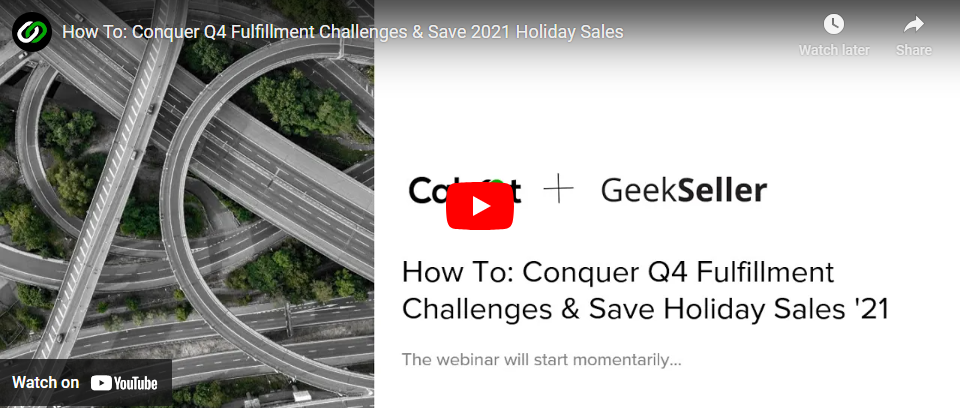
Here’s what we covered in our advice-packed webinar:
- Top tips for selling on Walmart, eBay, Etsy, and Google Shopping
- Fulfillment challenges this Q4
- Carrier crunch
- Early shopping
- Amazon FBA limits
- Advice for overcoming fulfillment challenges and boosting revenue
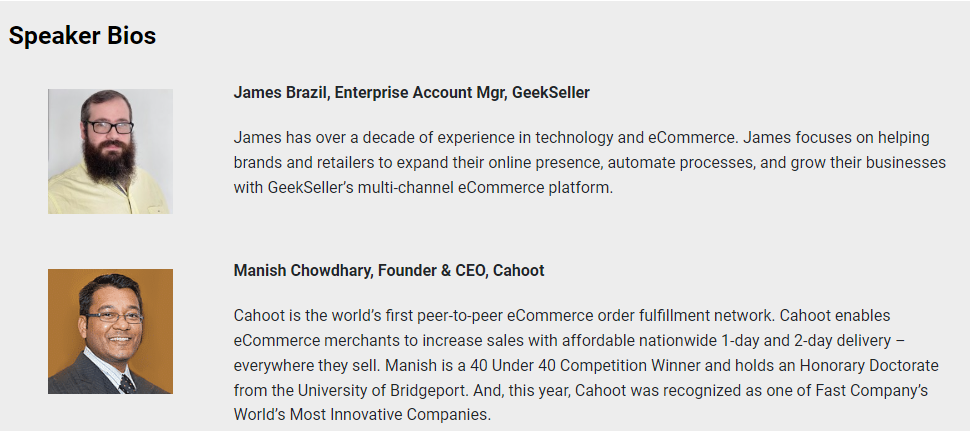
Boost your Bottom Line
In this article
Top 10 Profit-Saving Tips for Amazon Q4
Amazon already takes as much as 15% of each sale in referral fees – why are you letting them keep extra money on top?
This Q4 promises to be the biggest ever on Amazon, as experts predict that it will blow last year’s $100B quarter out of the water. In our recent webinar, the founders of Cahoot and Seller Locker share ten actionable pieces of advice for how to maximize your profitability
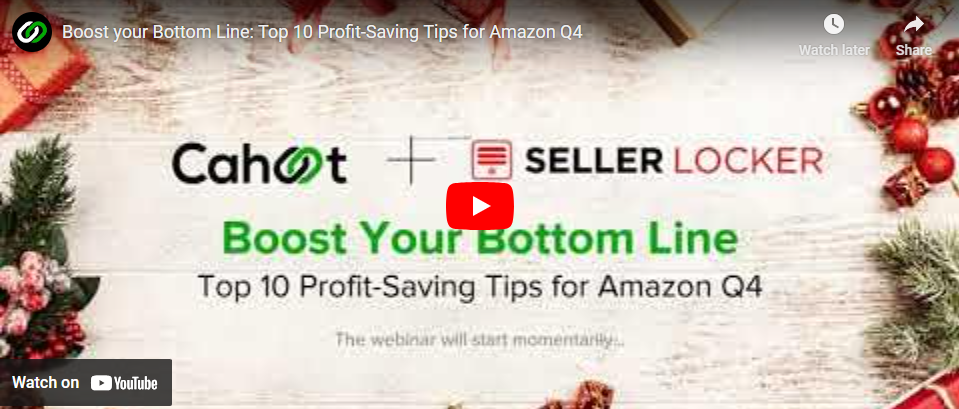
Manish from Cahoot goes deep on FBA – if you’re not obsessing over item size, bundling, and category, you’re probably letting Amazon fleece you. And moreover, FBA isn’t a complete solution: we go into detail on why you at least need FBA backup to maximize profits.
Joseph from Seller Locker then gives tips on reimbursements; you could be losing over a dollar per item in overcharges if Amazon measures your product even a centimeter longer than it is! He goes on to share advice on how to reduce returns, including how to get into Amazon’s new invite-only PLS program that provides a button for sellers to work with customers before they process a costly return.
Here’s what we covered in our advice-packed webinar:
- FBA Operational Excellence
- Why You Need Alternatives to FBA
- How to Fight Back Against Overcharges from Amazon
- How to Minimize Returns – including details on Amazon’s new return-interrupting tool
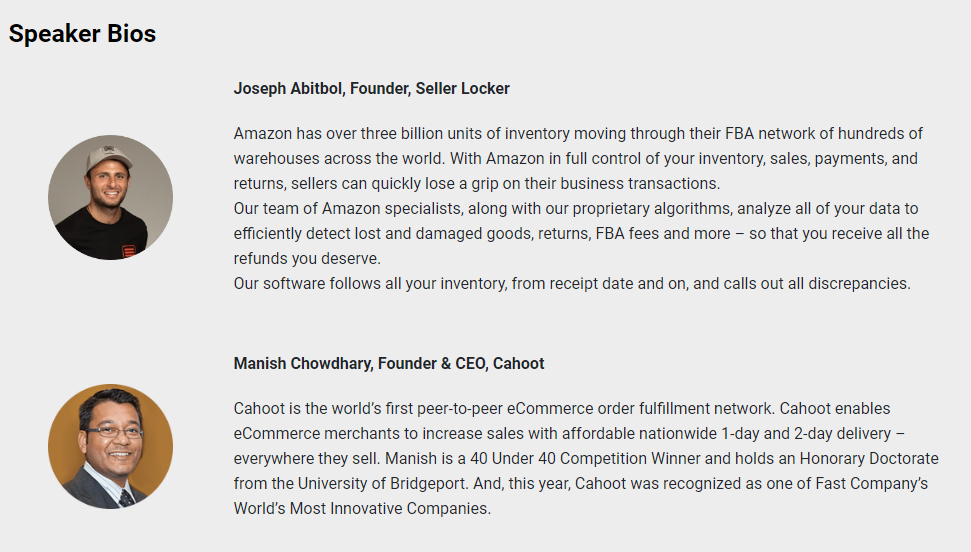
This Q4 is Different
In this article
Grow Revenue in Changing Times
There are more than one hundred billion dollars up for grabs on Amazon this Q4 – but shoppers, supply chains, and competitors are changing faster than ever. For instance, did you know that Amazon launched their “Black Friday” deals on October 4th?
If you’ve been planning on the same old post-Thanksgiving rush, the good news is that there’s still time to adapt. You can count on challenges this peak season, but you can pivot to earn your share of the pie.
Cahoot and Tinuiti offer their expertise to help you jump on this early selling wave with confidence in their recent webinar, “This Q4 is Different: Grow Revenue in Changing Times”.
This Q4 is Different – Grow Revenue in Changing Times from Cahoot Technologies
They offered actionable advice on five pressing topics that you can put into practice to boost your revenue and profit right away:
- How to keep CPC down despite surging competition for ads
- How to encourage customers to buy early and often
- Advanced tactics to improve detail page conversion
- How to grow when Amazon’s new storage limits cut your FBA inventory
- How to get your products to customers despite the parcel carrier crunch
You might be treating demand generation and fulfillment as two separate sides of the house, but you’ll have to strategically manage them together to maximize your results. For instance, treating October and early November as a holiday selling season won’t just win you new customers – it will improve your advertising efficiency because you’re not competing with the post-Thanksgiving rush of ad dollars, and it will improve your fulfillment costs because you’ll beat carrier surcharges.
Watch our on-demand video to learn how you can take advantage of this emerging trend!

